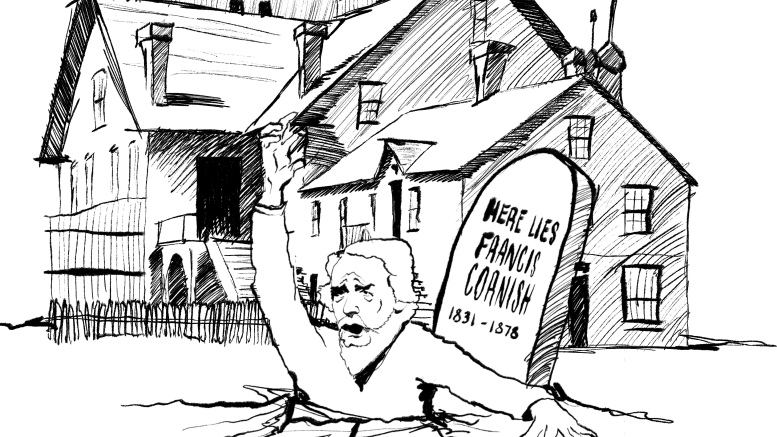Winnipeg will mark its 150-year anniversary on Nov. 8, 2023. In the lead-up to civic celebrations, it is important to look at what Winnipeg’s incorporation meant to people at the time.
The recent victory of premier-designate Wab Kinew’s Manitoba New Democratic Party (NDP) was historic. It also calls us to look back into why Kinew would become the first First Nations premier of this province, which was founded by Indigenous people, over 150 years after it joined Confederation in 1870.
The years immediately following Manitoba’s incorporation were characterized by Canadian intervention in Manitoban political processes. These interventions lent incoming Canadians more power in the region and promoted intense unchecked violence against First Nations and Métis people in the province.
Soldiers in the occupying army, led by Col. Garnet Wolseley, enacted a “reign of terror” against First Nations and Métis Manitobans. Racist mobs ransacked Métis-sympathetic newspapers, so reporting on incidents of violence was limited. Following the murder of Elzéar Goulet in 1870 and the violent assault on his daughter Laurette, those responsible saw no legal repercussions, although authorities knew who the attackers were.
Amid this reign of terror, in 1872 — two years after Manitoba was annexed to Canada — Manitobans participated in their first federal election.
Voters in the villages of St. Boniface and Winnipeg faced intimidation and assault when a group of racist Winnipeg settlers stormed across the Red River to demand the addition of several anglophone residents to the St. Boniface voter’s list.
Rioters shot and beat voters in the St. Boniface polling station before charging back across the river and enacting chaos on Winnipeg’s as-yet-unpaved streets. Fortunately, the shooter, James Farquharson, had bad aim, which is the only reason no one died.
One of the leaders of the 1872 election riot was Francis E. Cornish, who would become the first mayor of the city of Winnipeg in its inaugural election in January 1874.
Cornish was incredibly bigoted and bad-tempered. He often overtly insulted his opponents, referring to one fellow politician as a “full grown dog,” and the chief of provincial police as a “toad-eating Communist.”
As one of the first lawyers in the province at the time, Cornish was among those responsible for ensuring people engaged in racist attacks against Indigenous Peoples living in Manitoba got away with their crimes.
Some Manitoba residents had concerns about Winnipeg becoming the capital city of the province — several of those pushing for its incorporation were among those encouraging and participating in racist violence, including Cornish.
Dr. Curtis James Bird, a member of a prominent Métis family, had been formally appointed as coroner for the Council of Assiniboia before the Red River Resistance and continued in this role in Louis Riel’s Legislative Assembly of Assiniboia. As the speaker of the legislative assembly of Manitoba, he ruled a proposal for Winnipeg’s incorporation to be out of order in 1873. After this, he was called out on the pretense of a medical emergency and attacked with either hot tar or oil.
Despite a reward of $1,000 offered to turn in those responsible, no one was ever charged in connection to this assault.
Winnipeg’s eventual incorporation in November of that year meant victory for those who had been attacking Indigenous Manitobans without recourse for the past three years. Cornish’s election win in 1874 cemented unchecked settler violence as an implicitly accepted fact of existence in the province.
Cornish’s pick for the first chief of the Winnipeg Police Force, John S. Ingram, was also a participant in the 1872 election riot, and was similarly known for his violent behaviour. Following trials related to the election riot, Ingram beat a lawyer involved in the prosecution so badly he was blinded in one eye.
Cornish and Ingram both lost their jobs in 1875, but their time in power shows that settler-colonial violence was not only tolerated but an integral part of the fabric of our city.
Although I’ve lived in Winnipeg all my life, I didn’t learn about these events in either elementary or high school. It wasn’t until I got a job as a tour guide in Winnipeg’s Exchange District that I started learning more details about our foundation as a city. A lot of this information is scattered across the internet, on HTML pages maintained by dedicated amateur historians or in uploaded PDFs of texts like Alexander Begg’s and Walter R. Nursey’s 1879 book Ten Years in Winnipeg.
When we celebrate historic milestones like Winnipeg’s 150-year anniversary or the inauguration of the first First Nations premier in Manitoba history, it is important to ask which stories are left out.


